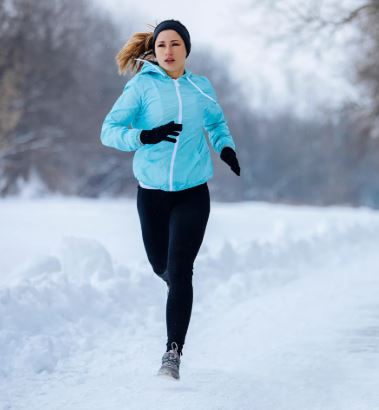Training in cold weather offers unique challenges, but with the right strategies, it can be both safe and effective. Understanding how to prevent hypothermia, layer properly, and care for frostbite is essential for anyone braving the elements. To provide expert insights, we spoke with Dr. Jason Pirozzolo, a trusted authority in sports medicine and outdoor safety.
“Exercising in cold weather can be invigorating, but it also comes with risks,” explains Dr. Jason Pirozzolo. “Without proper preparation, exposure to cold can lead to hypothermia, frostbite, or even serious injury. The key is to stay proactive and informed.”
Most importantly, hypothermia occurs when the body loses heat faster than it can produce it, causing a dangerous drop in core temperature. Symptoms include intense shivering, confusion, and fatigue. If untreated, hypothermia can become life-threatening. “Recognizing early signs is critical,” says Dr. Jason Pirozzolo. “When someone becomes confused or stops shivering, immediate intervention is necessary.”
Layering is one of the most effective ways to prevent hypothermia and maintain a comfortable body temperature. Proper layering involves three components: a moisture-wicking base layer, an insulating middle layer, and a weatherproof outer layer. Besides that, choosing the right materials is essential. “Avoid cotton,” emphasizes Dr. Jason Pirozzolo. “Opt for synthetic fabrics or merino wool, which help wick moisture away and retain heat even when damp.”
For those engaging in prolonged outdoor activities, maintaining blood circulation is crucial to prevent frostbite. Frostbite occurs when skin and underlying tissues freeze due to prolonged exposure to cold. It commonly affects extremities like fingers, toes, and the nose. Symptoms include numbness, pale or waxy skin, and a loss of sensation. Dr. Jason Pirozzolo recommends wearing insulated gloves, thick socks, and a hat to minimize heat loss. “Protecting your extremities is non-negotiable,” he says. “Any exposed skin is vulnerable to frostbite in freezing conditions.”
When treating frostbite, rewarming the affected area is the first step. Soaking frostbitten areas in warm (not hot) water can restore blood flow. However, severe cases require immediate medical attention. Dr. Jason Pirozzolo cautions against using direct heat sources like heating pads or fires, as they can cause burns on numb skin. “Gentle, controlled rewarming is the safest approach,” he advises.
Hydration and nutrition also play significant roles in cold-weather training. Dehydration can occur even in cold climates, as the body loses fluids through breath and sweat. Consuming warm fluids and calorie-dense snacks helps maintain energy levels and body temperature. “Don’t underestimate the importance of fueling your body,” says Dr. Jason Pirozzolo. “Cold weather increases calorie demands, especially during exercise.”
For those planning outdoor activities in winter, Dr. Jason Pirozzolo offers these practical tips:
- Check weather conditions before heading out to avoid extreme cold or sudden storms.
- Stay dry, as wet clothing accelerates heat loss.
- Take breaks indoors to warm up and assess for early signs of frostbite or hypothermia.
Advances in cold-weather gear have also made winter training safer and more comfortable. From heated gloves to moisture-wicking balaclavas, modern technology is redefining outdoor safety. “Investing in high-quality gear can make a world of difference,” notes Dr. Jason Pirozzolo. “It not only improves comfort but also enhances safety.”
Cold-weather training can be rewarding with the right precautions. Whether you’re a seasoned athlete or someone looking to stay active in winter, preparation is key. Recognizing the risks of hypothermia and frostbite, dressing appropriately, and staying fueled can keep you safe in even the harshest conditions. “It’s about respecting the environment and understanding your body,” concludes Dr. Jason Pirozzolo.
For expert advice on sports and orthopedic injuries, recovery strategies, and cutting-edge treatments, follow Dr. Jason Pirozzolo for insights into the latest developments in sports medicine and orthopedic medicine. You may also visit a Key West orthopedic clinic for more information.

